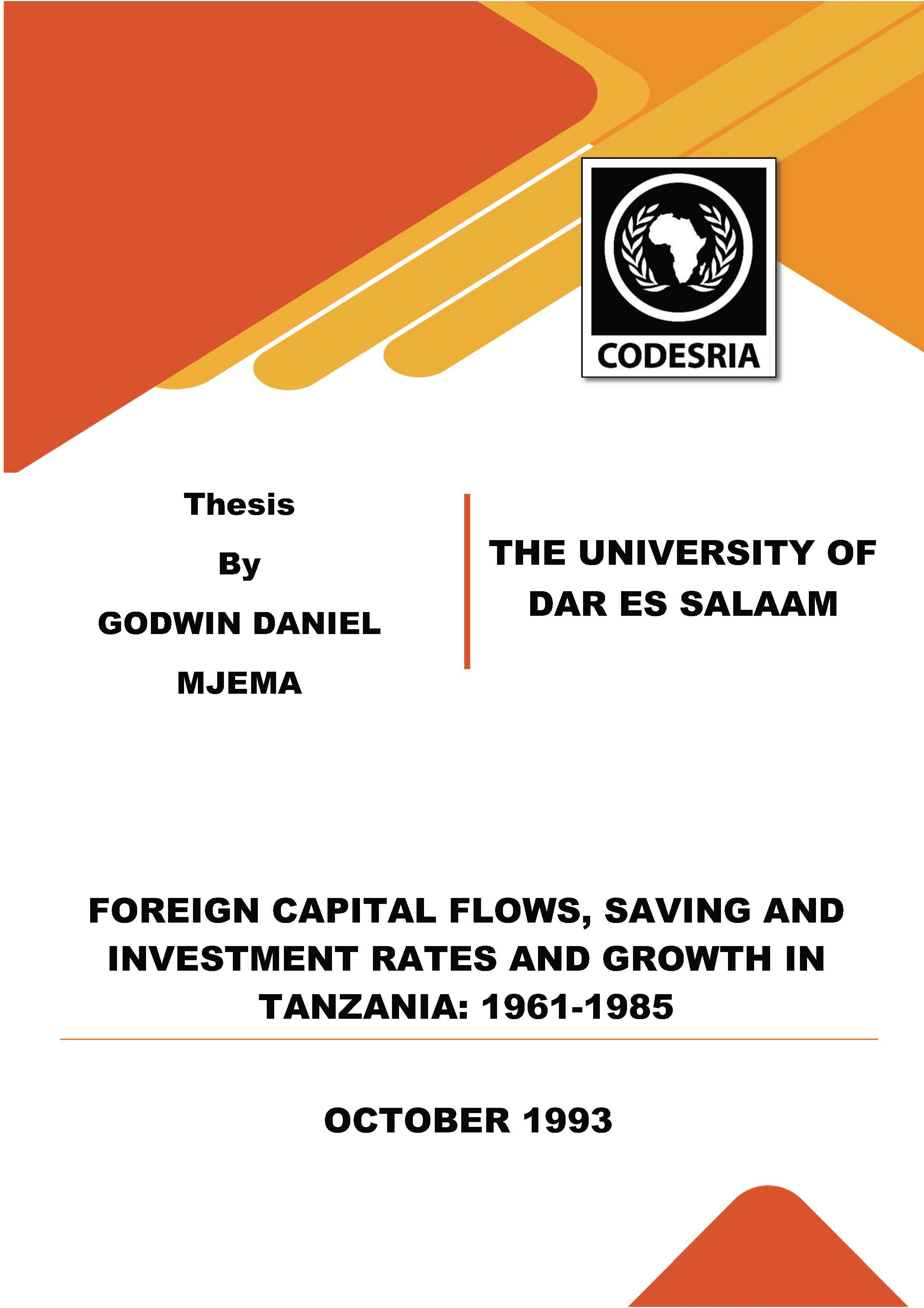FOREIGN CAPITAL FLOWS, SAVING AND INVESTMENT RATES AND GROWTH IN TANZANIA: 1961-1985
Mots-clés :
CAPITAL FLOWS, INVESTMENT RATES, GROWTH, TANZANIA, 1961-1985Synopsis
This study undertakes to analyse quantitatively and qualitatively the impact of foreign capital flows on Tanzania's savings, investment and incarne growth during the 1961-1985 period.
Akin to a host of other Less Developed Countries (LDCs). Tanzania was, for this stated period of time, a recipient of multilateral and bilateral foreign capital, defined here to encompass loans of all categories and grants. The objective of such capital inflows was, like in many recipients, to relieve the country of the savings and foreign exchange constraints to economic growth claimed to prevail in a number of LDCs.
With respect to the terms under which foreign capital was extended, this study has found that, compared to other Sub-Sahara Africa (SSA) recipients, foreign capital to Tanzania had relatively lower interest rates, longer maturtty and grace periods, thus the inflows had the potential to increase the country's domestic savings, investment and incarne growth.
There exists however, some theoretical controversies surrounding the impact of foreign capital flows on the savings investment and incarne growth of recipients. Whereas the 1960s was dominated by an upsurge of literature that supported the view that foreign capital would have a positive impact on the mentioned variables (Chenery and Strout, 1966), the 1970s was dominated by literature opposed to the above view. Griffin and Enos (1970) for instance showed empirically how foreign capital flows could have adverse effects on the recipients' saVings. The late 1980s on the other hand, saw the emergency of studies searching for precedence between foreign capital flows and domestic saVings of recipient countries (Bowles, 1987). The debate on the impact of foreign capital flows is thus more of an empirical question than a theoretical issue.
In situating the debate on the impact of foreign capital flows to the Tanzanian context, this study has utilised a modified version
of the Weisskopf (1972), Gupta (1975) and Hyuha (1984) models. The simultaneous equation mode! specified in this study employed time sertes data for the 1961-1985 period and was estimated by the conventionally used Two Stage Least Squares (2SLS) technique. The study has found, among other things that, during the 1961-1985 period, foreign capital flows were negatively related to the domestic saVing effort in Tanzania. This finding, which is in line With the Griffin - Enos (1970) hypothesis, tends to suggest that the inflows were substituting for the domestically available saVings.
Where incarne growth and investment are concerned, the results obtained show that there was, during this period, a positive
relationship between foreign capital flows and these variables.
After carrying out precedence tests following the Granger (1967) and Sims (1972) tradition, the study has found that in Tanzania, and particularly during the 1961-1985 period, precedence was running from low domestic saVings to foreign capital flows. These results are in line With Bowles' (1987) results for Tanzania during the 1961-1984 period. The structural break
test results confirmed the existence in Tanzania, of a structural break around 1971, a feature suggesting that the regression covering the 1961-1970 period could be sbucturally different from that covering the 1972-1990 period.
The policy implications emanating from this study point at among other things, the need for the Tanzanian government to
increase its efforts aimed at mobilising domestic savings so that the in-coming foreign capital flows supplement the existing domestic savings. Also there is an urgent need to see to it that the incoming foreign capital flows from various sources are efficiently and optimally used.
Téléchargements
Références
Abbott, G. (1970) "Economie Aid as a Unilateral Transfer of Resources" Journal of Political Economy. Vol.15
Allen R.G.D., (1981) Mathematical Analysis For Economists, Macmillan, London
Areskoug, K. (1976). "lntertemperal Resource Allocation in Developing Countrtes: The Role of Foreign Capital" The Review of Economies and Statistics. Vol.24
Aslam , N., (1987) "The Impact of Foreign Capital Flows on Savings and Investment: The Case of Pakistan " Pakistan Development Review, Vol. 26
Bacha, E., (1990) "A Three Gap Model of Foreign Transfers and the GDP
Growth Rate in Developing Countries" Journal of Development Economies. Vol. 32"
Balogh, T. (1977) "Aid and World Instabili1y" Economie Development and Cultural Change. Suppl.
Bank of Tanzania (1982) Tanzania: Twenty Years Of Independence (1961-1981) A Review of Political and Economie Performance, Dar- es Salaam.






